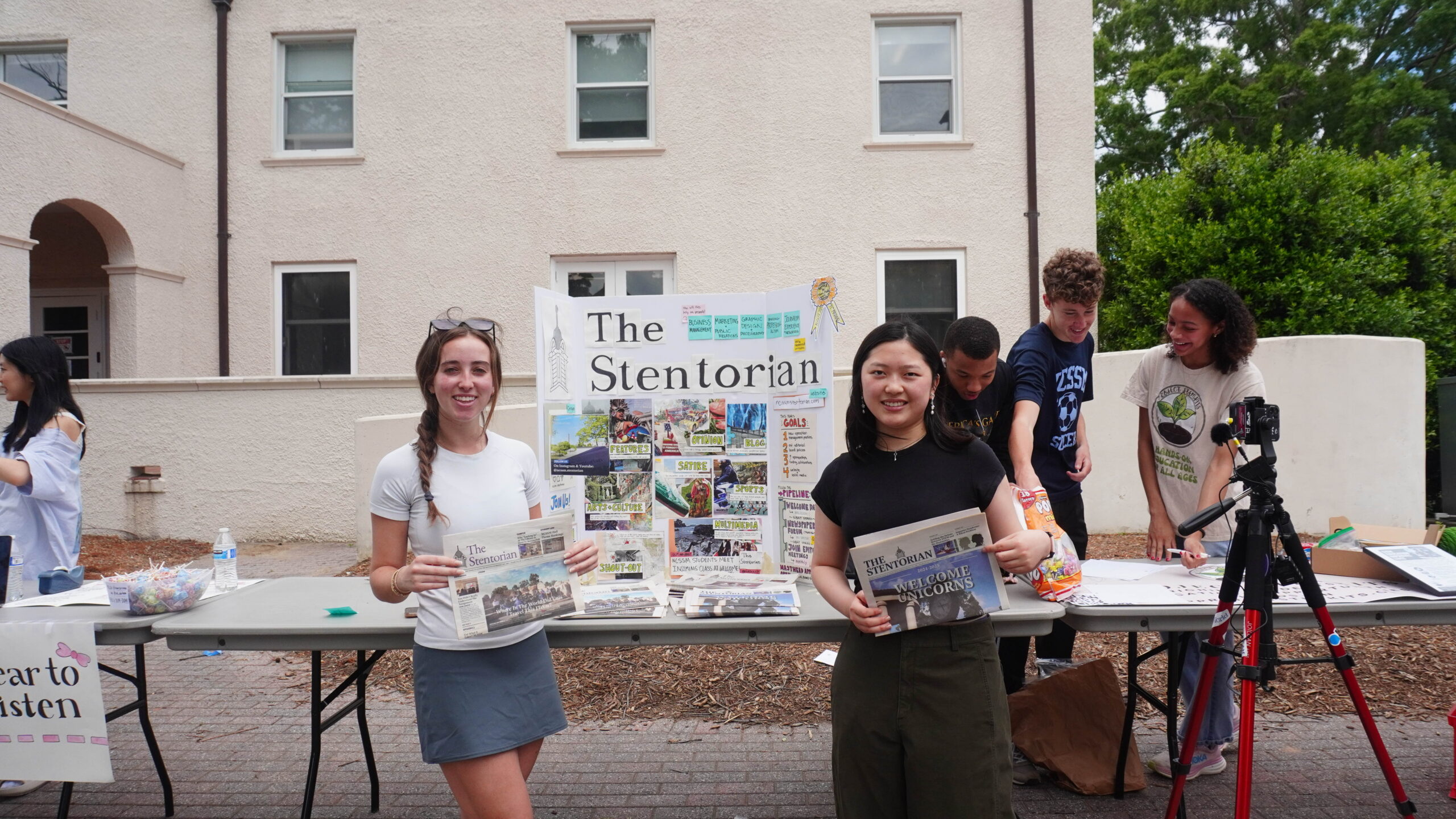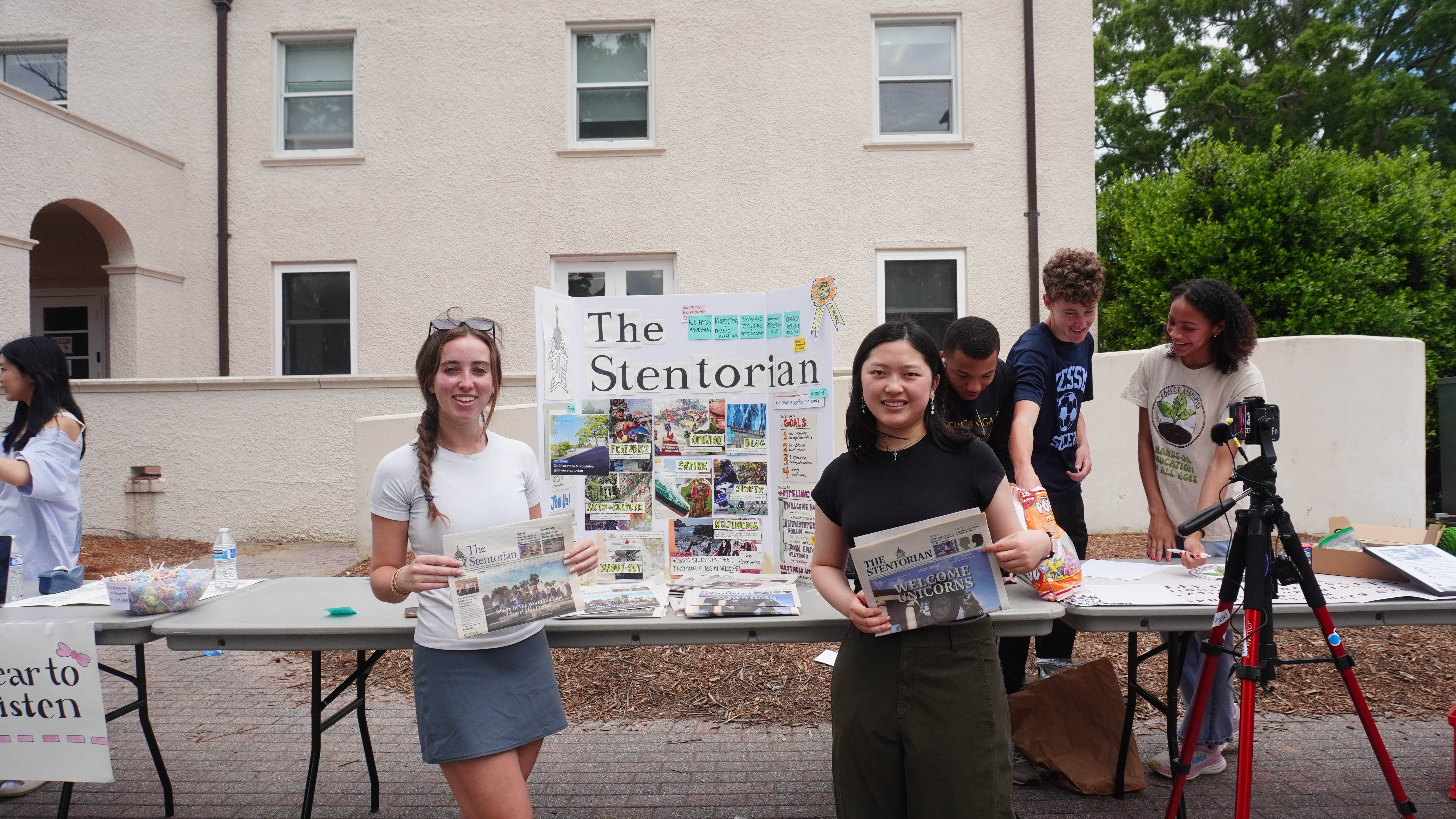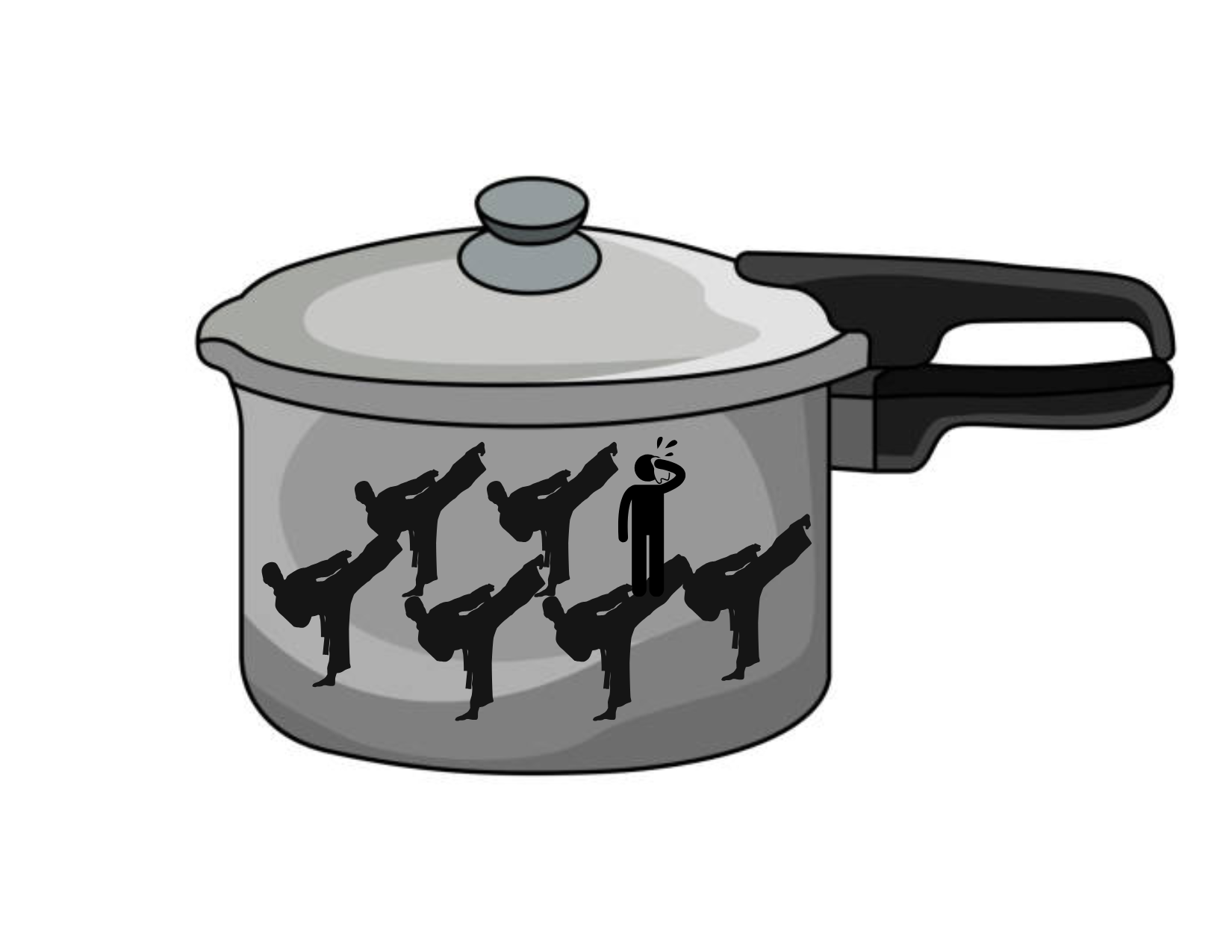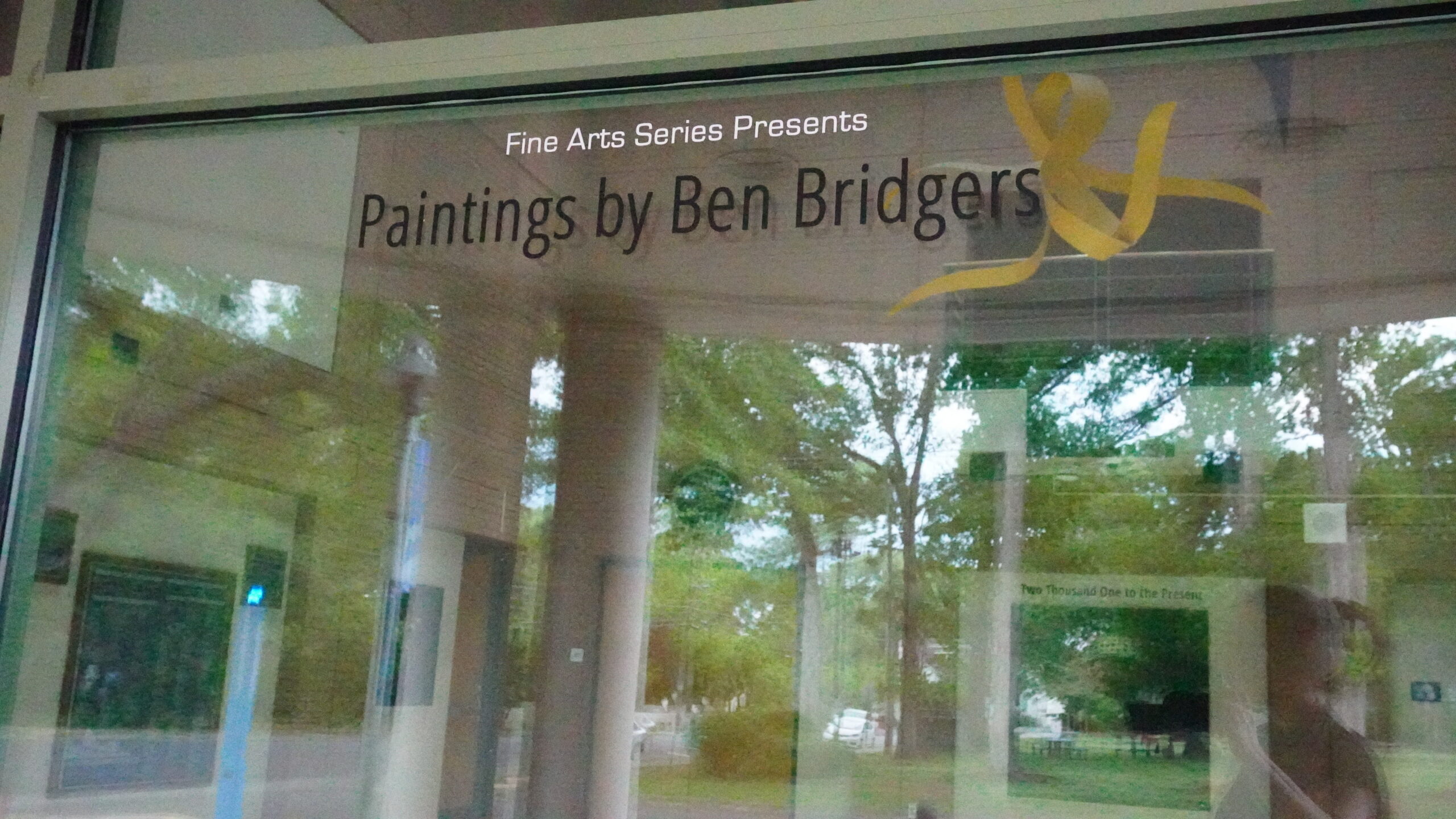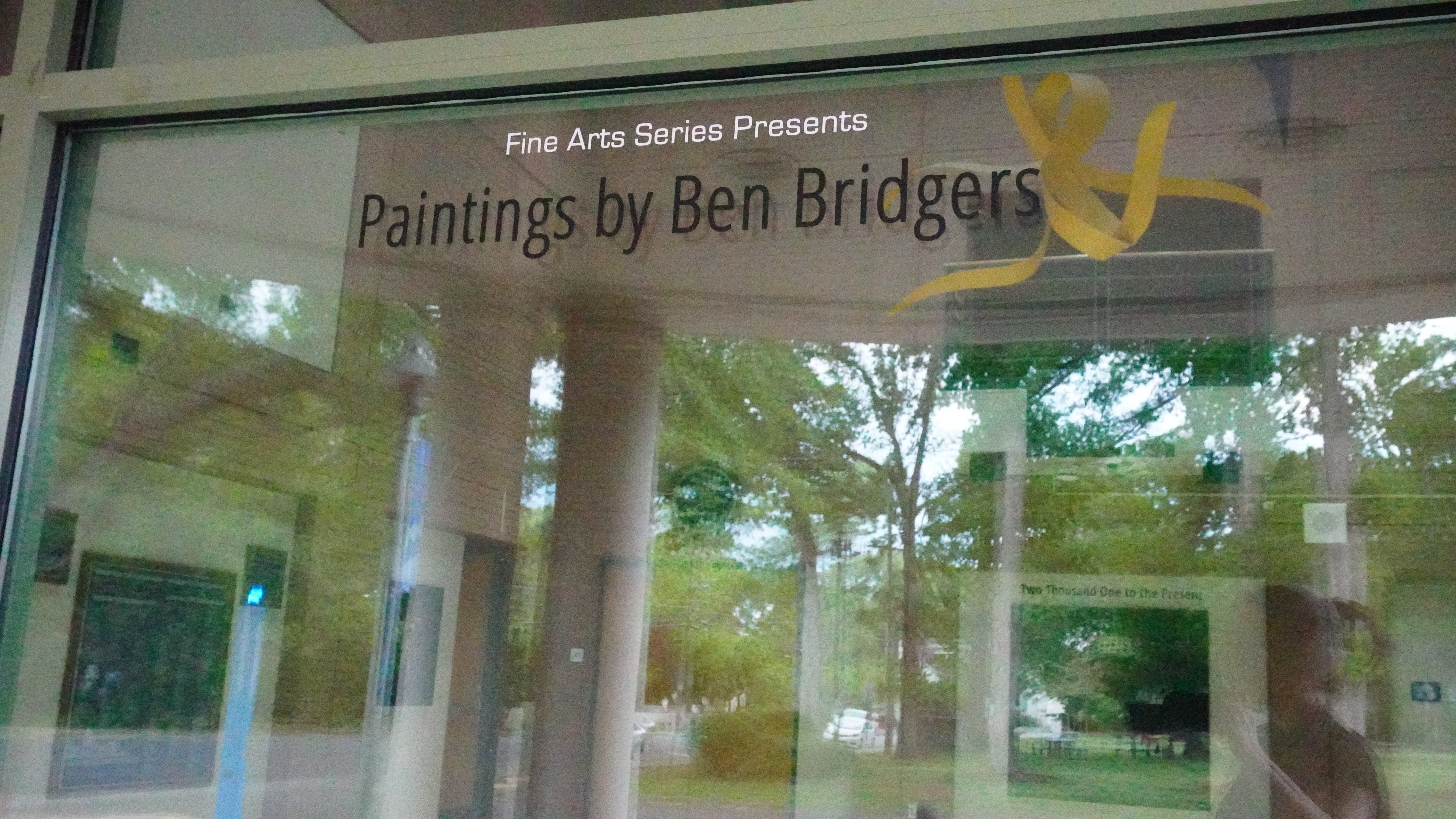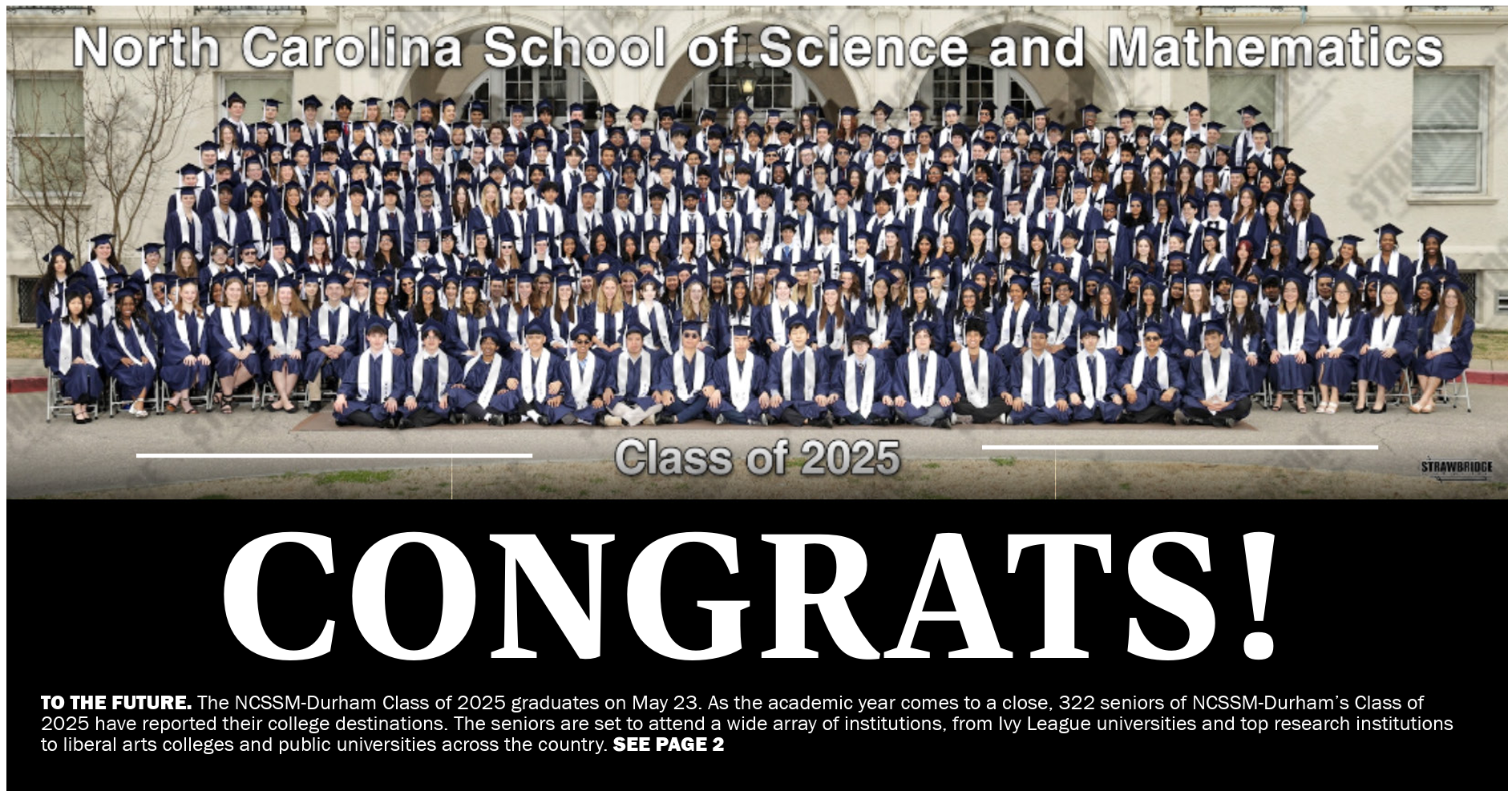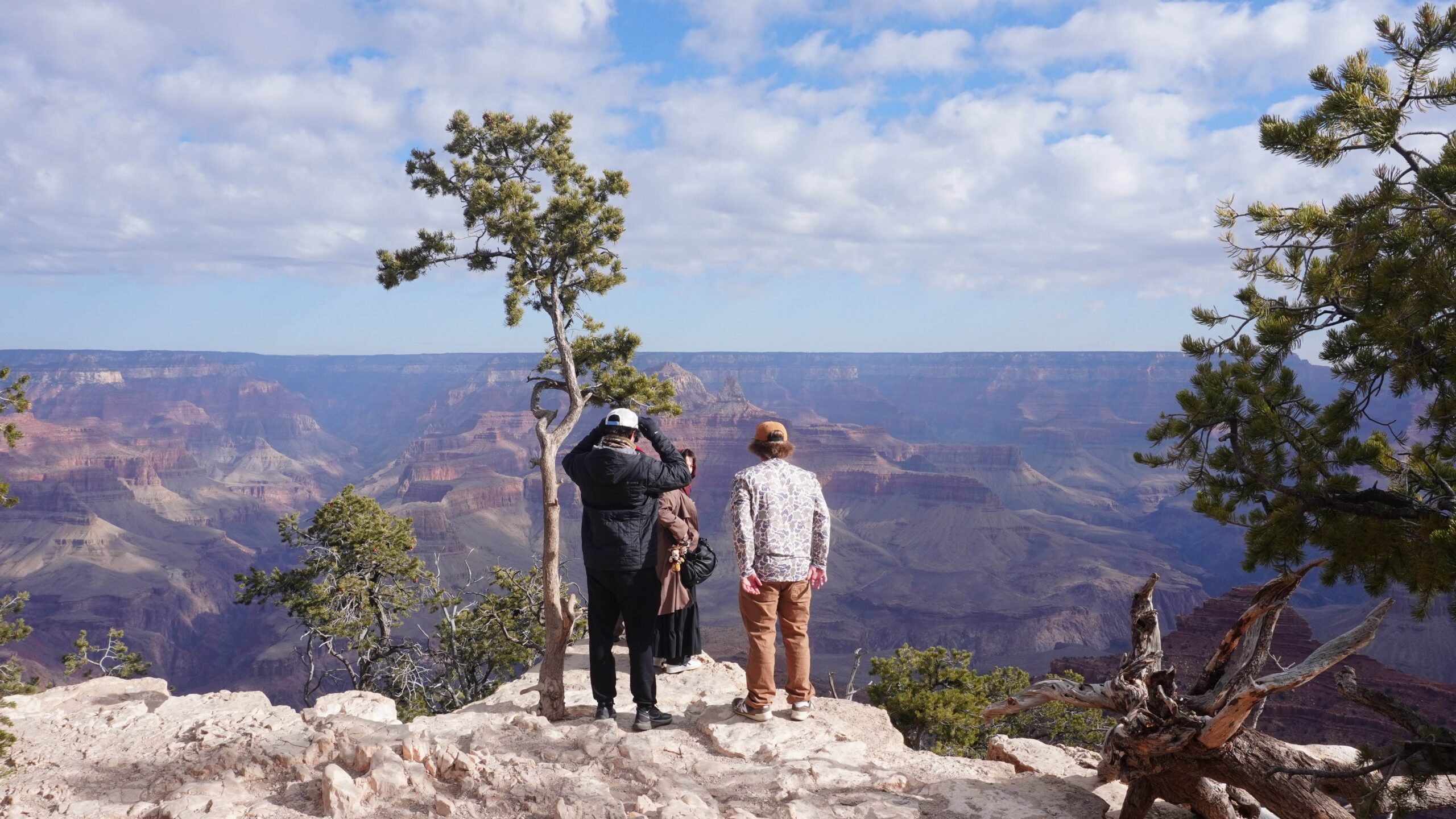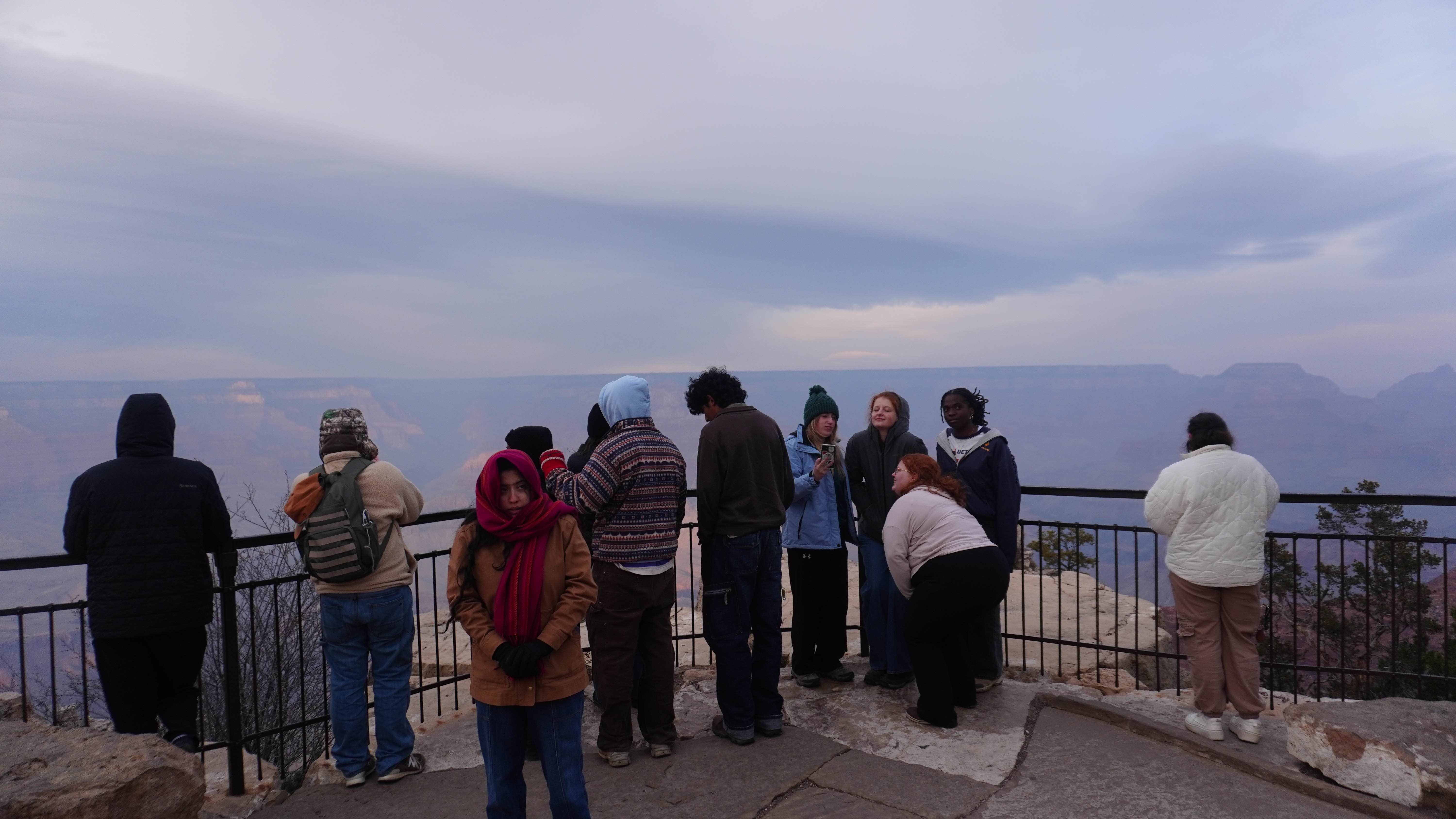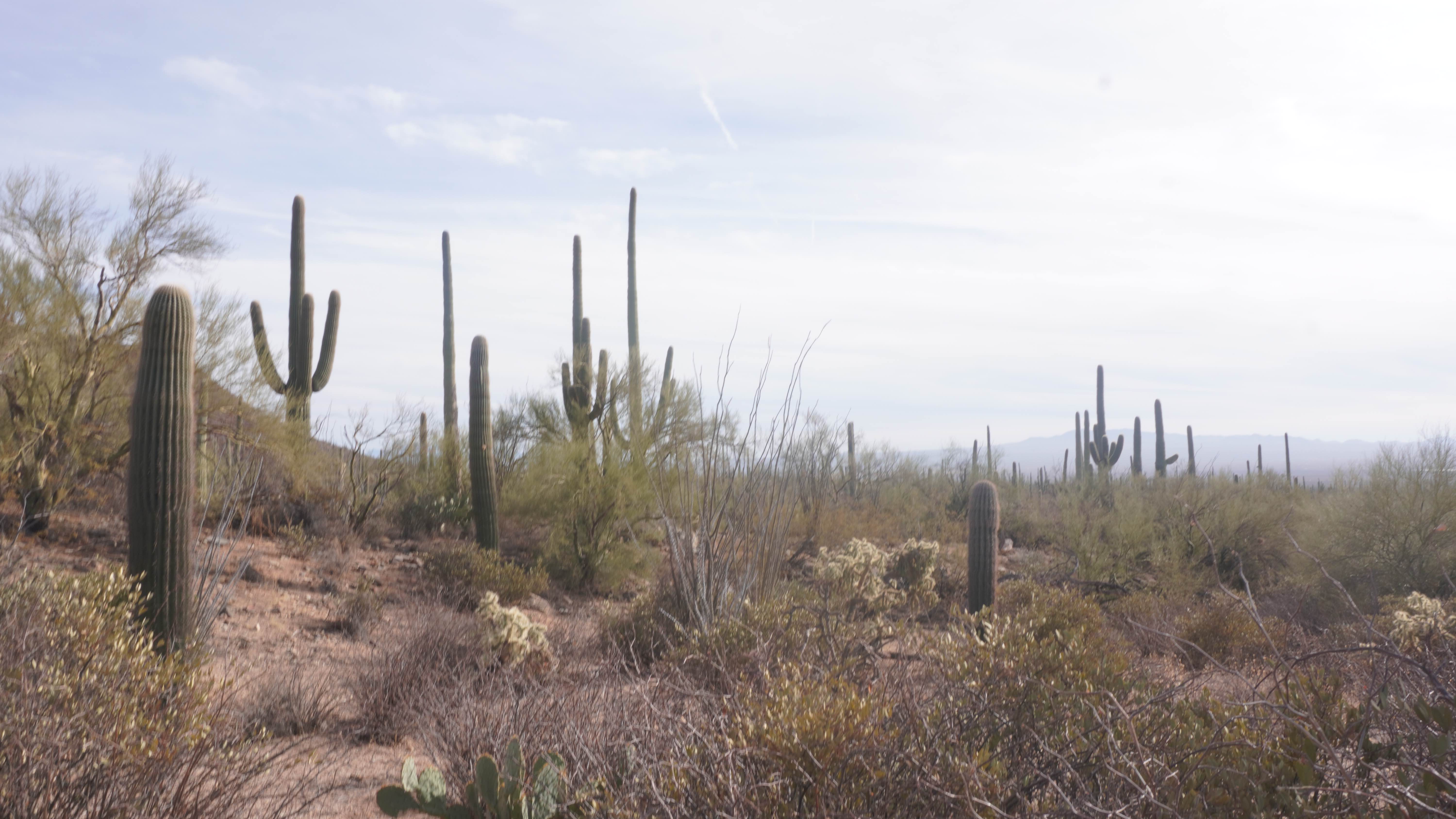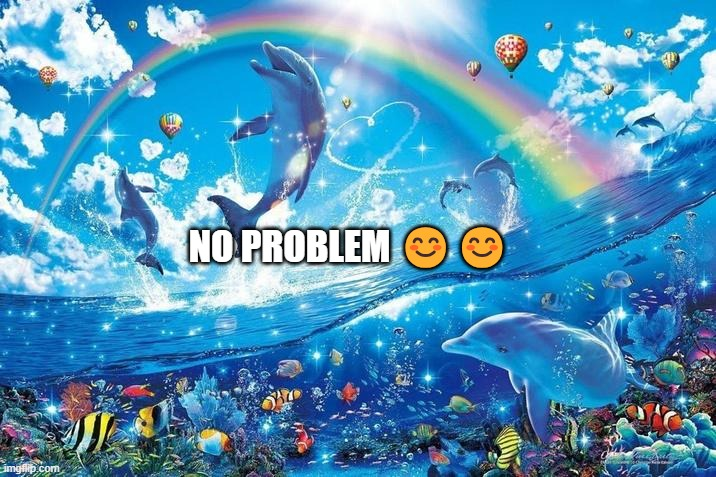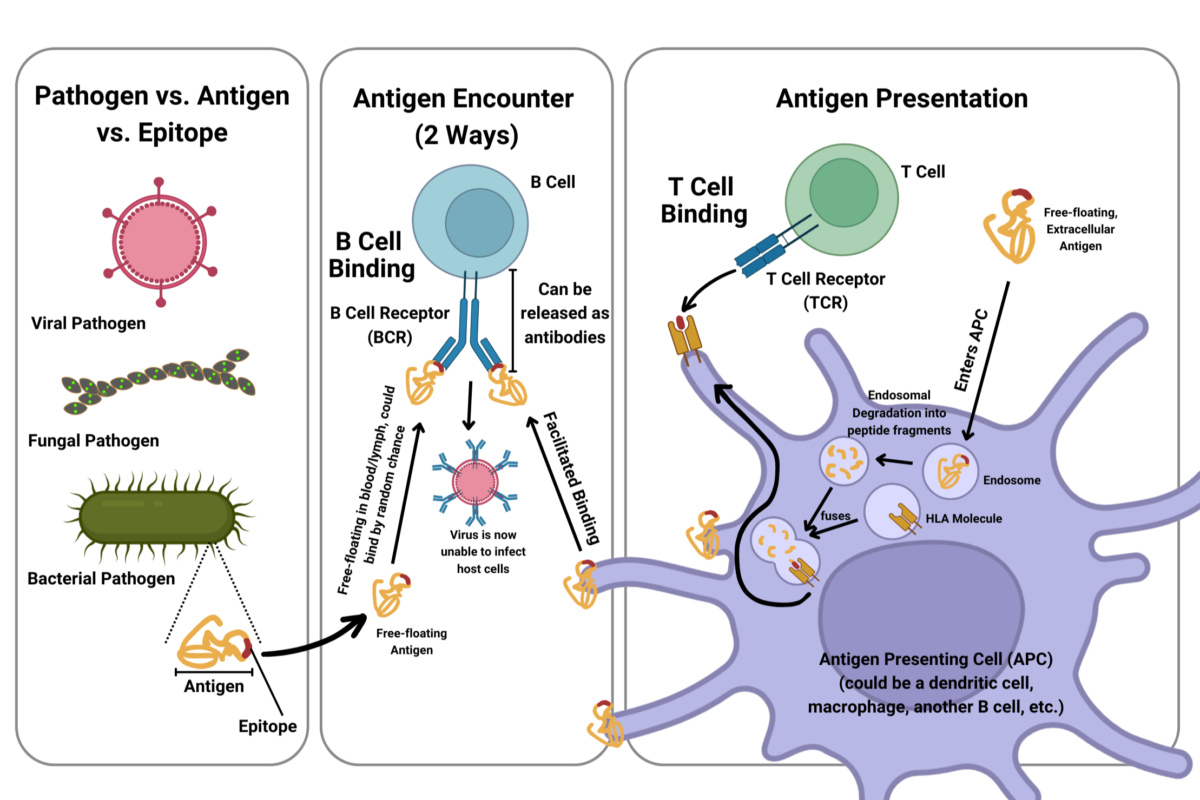By Teresa Fang, Stentorian Editor-in-Chief
Dear seniors,
If you are reading this, please give the grandseniors our sincerest thanks, for they have blessed us with the knowledge to hopefully ace the post-NCSSM math exam (which also has a bit of every other subject imaginable, somehow). When I brought up my memories of the entrance math exam as a sophomore to some of our UNC brothers and sisters last weekend, I believed that was the end of traumatic overstudying and that we’d spend the next two years having fun and dancing on the beautiful Bryan lawn every day. I didn’t foresee that there would be a surprise exam to test whether our knowledge retention is longer than a goldfish’s.
God knows how many more surprise exams we will have to endure, but the grandseniors have mercifully provided us with some questions from their own exams. They were pulled straight from their own mighty memories, so I trust these questions completely and will NOT in fact be memorizing the answers, at all. BTW, I heard this exam will happen in early June via proctored Zoom.
1. Compare the growth of the Fibonacci sequence to the number of emails you received titled “Free food in Blobby (walk don’t run)” in a single semester. What mathematical model best describes the rate of inbox saturation? Be sure to show all 492 steps.
2. Prove, using indirect contradiction and at least one Hall Scream in the ETC gym, that the probability of getting into a good college increases with the number of problem sets you “collaborated” on but didn’t actually understand.
3. If a student walks from Hill to the ETC in under 4 minutes carrying an iced lavender matcha from Joe’s and a TI-84, what is the minimum amount of shame they must feel for not taking the tunnels? Express your answer in terms of π, Euler’s identity, and residual sleep debt.
4. Let xxx represent your GPA, and yyy your number of hours slept this week. Show that as x→4.0x \to 4.0x→4.0, y→y \toy→ [REDACTED]. Use a Lagrange multiplier if you’re feeling fancy, or just cry.
5. Calculate the volume of a metaphorical void created by dropping your calculator down the Bryan stairs from 4th Bryan 17 minutes before the AP Calculus BC exam. Assume it echoes with your last three coherent thoughts.
6. A student takes 8 courses in one semester, joins 4 clubs, runs for 2 positions, and attends 6 optional speaker lectures. Prove that this student exists only theoretically and was last seen orbiting the library at Mach speed. Bonus: Derive a matrix transformation that maps “ambition” to “burnout.”
7. Using combinatorics, determine how many possible outfit combinations can be made from the same two NCSSM hoodies, one pair of sweatpants, and seven unmatched socks. Include all valid permutations for Thursday, 8:30 a.m. (C block).
8. Using integral calculus, calculate the total amount of caffeine consumed by a student over the course of finals week. Be sure to account for exponential increase on the night before the Multi final and the delta spike caused by the ground Watts Coca-Cola machine breakdown.
9. You have 6 unsolved past problems, 3 panicked Messenger chats, 2 unread Canvas announcements, and 1 chemistry packet due. Create a Markov chain to represent your decision-making process. Explain why every state leads to “eat pizza in the PEC.”
10. Derive a function that describes the rate at which motivation decays when the Bryan courtyard hammocks are reinstalled. Bonus: Include external variables such as bird-watching, existential dread, and the Big Spoon concert.
11. Define a topology on the set of all NCSSM students such that all paths lead to the Bryan lobby. Justify whether this space is connected, compact, or simply chaotic good.
12. Finally, prove the following identity:
(NCSSM Senior)^2 = (Fear of adulthood) + (Last-minute Common App edits) + (Fifth pod of Keurig)
Use the Fundamental Theorem of Crying in the Shower.
